The contemporary business environment has adopted the use of office automation applications to enhance efficiency in operations and increase productivity. Such effective pieces of software exclude any repetition, minimise human error, and allow saving time on strategic tasks. Office automation change the way organizations perform their tasks such as email marketing, project management, etc. resulting in the development of uninterrupted processes and systems.
Office automation tools are now more superior and accessible than ever before because of the emergence of digital transformation. All companies have adopted the use of these technologies to enable them to compete very well in the current business world that moves faster than before. Small start-ups and large enterprises can also benefit by applying good office automation software that would dramatically influence the bottom line through efficiency, lower operational expenses, and higher staff satisfaction.
What is Office Automation?
Office automation is the deployment of technology and applications in automating regular tasks of office work and business activities. The same applies to a range of digital tools and platforms that perform routine administrative jobs, data entry, communication, scheduling, and workflow issues without the need to involve a human continuously.
The main aim of office automation tools is to reduce manpower and also to generate efficiency with maximum accuracy. With the installation of the office automation devices, companies will be able to design uniform procedures that run well and consistently. These systems are capable of processing anything, ranging from mere moving of data among applications to multidimensional multi-step processes that between various departments and third parties.
Recent developments in office automation software have leveraged artificial intelligence, machine learning, and cloud computing to provide business-aware solutions tailored to business needs. They integrate into existing software ecosystems, forming a cohesive digital workspace where it is easier to transfer information between platforms and for team members to collaborate more effectively.
Top 10 Office Automation Tools
1. Zapier
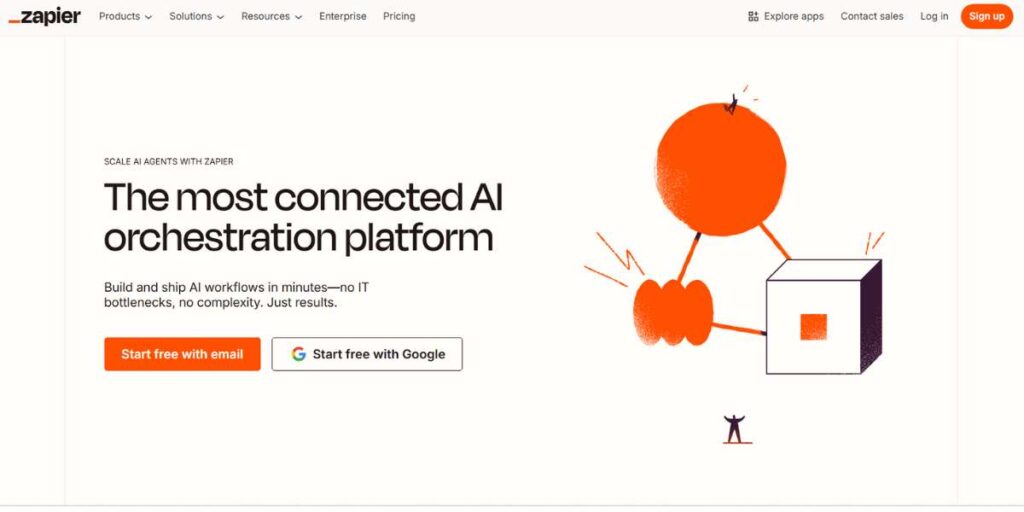
Why it’s powerful: Zapier is an automatisation platform, offering the largest range of connections, integrating more than 5,000 applications and making no demands on knowledge of code.
Zapier is a business automation central nervous system, and by using it, users can build so-called Zaps to connect multiple applications by specific combinations of actions and triggers. As one of the most powerful office automation tools available, the platform is good at halting silos in terms of data since there is easy transmission of information between the different software programs. Its simplicity of interface hides the complexity of automation from the non-tech user, whereas its comprehensive app library is compatible with just about any business software. Zapier is resilient, and its error handling is very good, which makes it the preferred destination for businesses that are serious about automation.
Key Features:
- Conditional workflows consisting of several steps
- Customized fretting and formatting features
- Joint and team automation
- Custom app integrations and Webhooks
- Tracks of errors and activity logs
- Mobile monitoring automation app
Best For: Companies that need to have complicated multi-app systems and complex workflow automation
Pricing:
- Free plan available
- Starter: $19.99/month
- Professional: $49/month
- Team: $399/month
- Company: $799/month
2. IFTTT (If This Then That)

Why it’s powerful: IFTTT is good at providing simple actions that are tied to conditions, and provides integration between well-known business and consumer apps, with a minimal amount of configuration.
IFTTT is simple and easy to use; thus, automation is made accessible to all people, even those who have little technical knowledge. As one of the more approachable office automation tools, it deploys simple “if this, then that” reasoning that allows the creation of automations, which are known as applets, on the platform. IFTTT is simpler than enterprise solutions because it is consumer-friendly and integrates with a great number of consumer products and services. It especially works well with small companies and personal users who want to automate their everyday tasks but do not want to put a lot of time into making it configured. The platform’s consumer-friendly nature allows it to optimally fit in simple automation requirements.
Key Features:
- Low-level trigger-action automation
- Smart home connectivity
- Automated social media
- Location activators
- Voice assistance support
- Pre-packaged applet library
Best For: Small enterprises, consumer-level, and not complex automation requirements
Pricing:
- Free plan available
- Pro: $3.99/month
3. Calendly
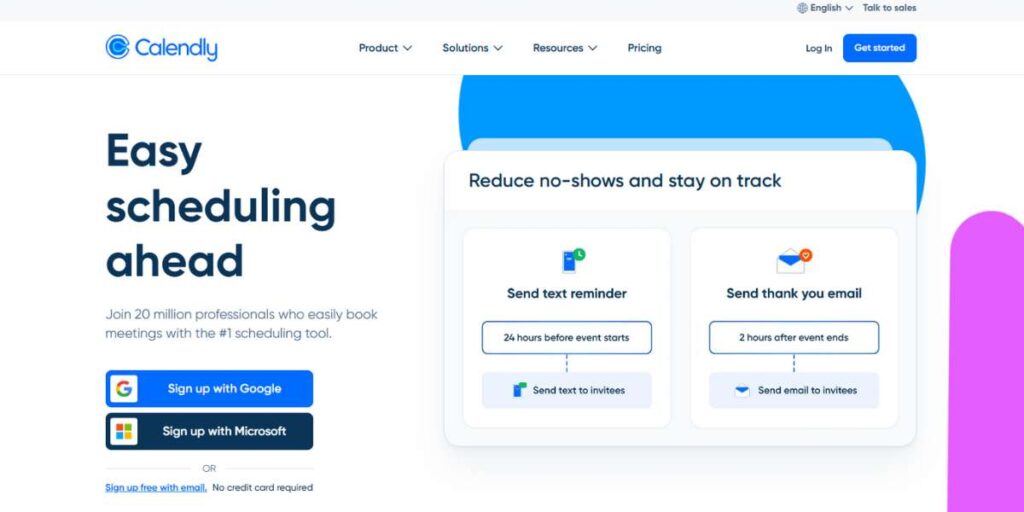
Why it’s powerful: Calendly removes the tag of taxi between scheduling with the intelligent calendar management and automatic booking systems.
Scheduling appointments with Calendly transforms the whole process of booking an appointment into an automated system, allowing for the creation of communication with a customer from the confirmation. As one of the most effective office automation tools, the platform supports the most popular calendar systems and video conferencing systems, which feels unified both to the person doing the scheduling and the attendee. Its smart availability awareness design averts multiple bookings, and the setting of booking rules enables customization of meetings in tandem with business needs. Intermediate capabilities such as routing forms, collection of payments, and automated reminders make it a full-fledged scheduling solution that saves an administrator several hours a day.
Key Features:
- Auto-scheduling availability detection
- Personal booking forms and pages
- Connection with video conferencing tools
- Auto reminders and follow-up via email
- Round-robin and scheduling of teams
- Invoices and payments collection
Best For: Service-based businesses, consultants, and teams that have to conduct external frequent meetings
Pricing:
- Basic: Free
- Essentials: $8/month per user
- Professional: $12/month per user
- Teams: $16/month per user
4. Mailchimp
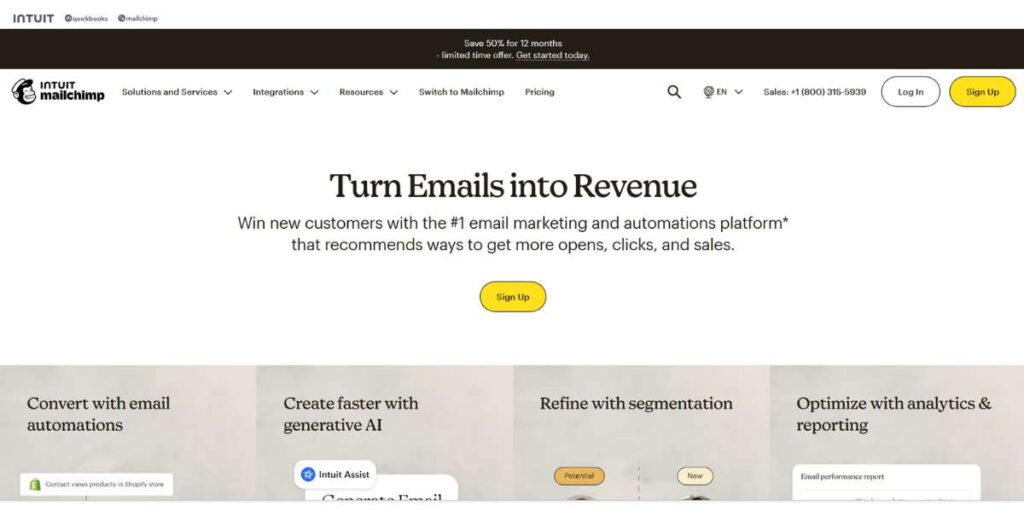
Why it’s powerful: Mailchimp has automated email marketing along with detailed customer journey mapping and advanced analytics.
Mailchimp has now expanded to be a full-fledged marketing automation service instead of a straightforward email marketing service. Its advanced automation capabilities allow enterprises to develop personalized customer journeys by using behavior, preference, and engagement patterns. Due to rich segmentation capabilities and its drag-and-drop campaign builder, it is possible to carry out very specific marketing communications. Advanced analytics gives insights into campaign performance, customer lifetime value, and ROI, which makes it essential to the data-driven approach to marketing and customer relationship management.
Key Features:
- Scan email automation workflows
- Behavioral targeting and segmentation
- A/B optimization and testing tools
- Digital advertising connected to social media
- Mapping the customer journey
- Solution analytics and reporting
Best For: E-commerce, marketing teams, and customer-retention oriented companies
Pricing:
- Free plan available
- Essentials: $10/month
- Standard: $15/month
- Premium: $299/month
5. HubSpot
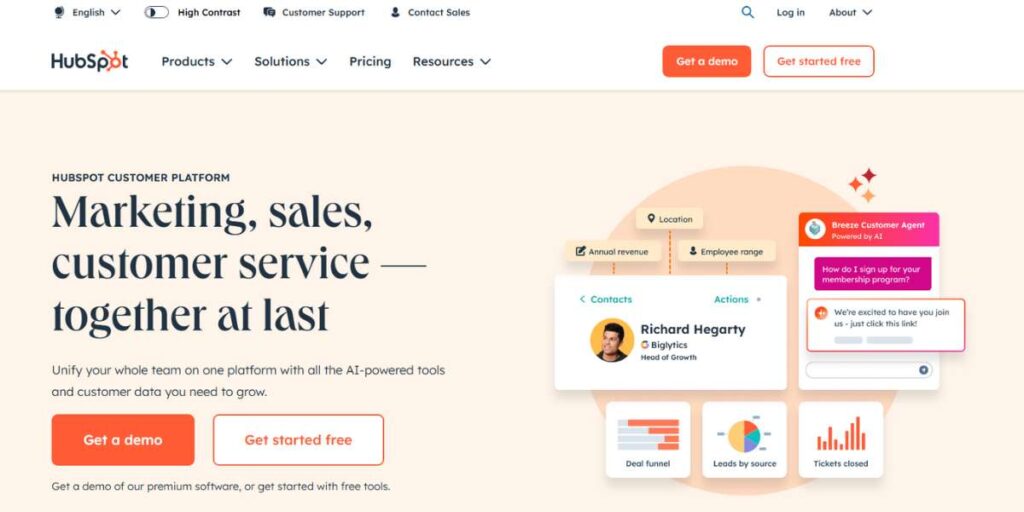
Why it’s powerful: HubSpot offers integrated CRM software, which has a vast automation experience at the marketing, sales, and service levels.
The automation of any business practice at HubSpot is comprehensive, which is why this service is a powerful platform in terms of aligning the way the whole business serves its customers. As one of the most scalable and integrated office automation tools, the platform not only handles marketing automation but also automates sales pipeline management, customer service ticketing, and customer lead nurturing. This is done through its unified database that makes customer information consistent when reaching all touchpoints, and highly sophisticated workflow automation that deals with complex business processes. The scalability of the platform and the possibility of wide customization make it serviceable in businesses of any magnitude, whether a startup or an enterprise.
Key Features:
- Full-blown CRM with automation aspects
- Nurturing and automation of lead scoring
- Automation of the sales pipeline
- Ticket customer service system
- Analytics and marketing automation
- Connection with 500+ apps
Best For: Developing companies that require an extensive CRM and marketing automation
Pricing:
- Free CRM available
- Starter: $45/month
- Professional: $800/month
- Enterprise: $3,200/month
6. Hootsuite

Why it’s powerful: Hootsuite simplifies control over social media because it automates posting, tracking, and responding across many platforms.
Hootsuite also simplifies social media presence with an integrated dashboard that allows a user to control several social networks at the same time. As one of the more specialized office automation tools, it offers features such as scheduled posting, auto responses, and social listening—enabling users to monitor brand mentions and industry trends. Its content curation tools ensure a regular publication rhythm, while analytics help measure audience engagement and the performance of individual posts. Team collaboration capabilities guarantee that a consistent social media strategy is pursued across departments and regions, making Hootsuite essential for modern marketing teams.
Key Features:
- Multi-platform social media scheduling
- Content curation and posting are automated
- Listening and monitoring
- Group and approval processes
- Depth reporting and analytics
- The ability to sync with larger social nets
Best For: Marketing teams and marketing agencies, as well as companies with a high usage of social media
Pricing:
- Free plan available
- Professional: $99/month
- Team: $249/month
- Enterprise: $739/month
7. Grammarly Business
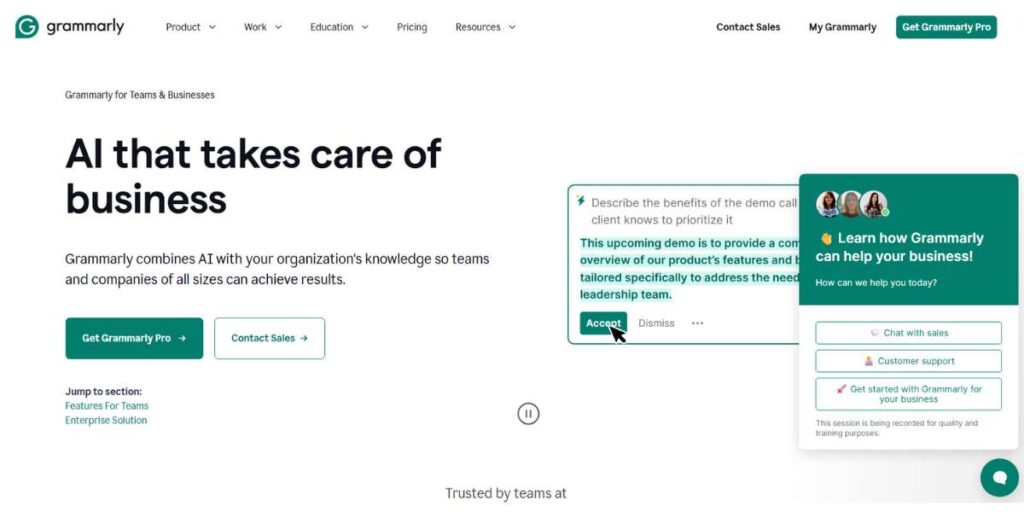
Why it’s powerful: Grammarly Business is a tool that all businesses need to keep their communications on a consistently high level, no matter what outlet is used; professional AI-based writing support.
Grammarly Business is more than a spell checker; it comes in handy to increase the power of writing in business communication. The AI engine on the platform will examine the context, tone, and audience to recommend corrections that can make a text more logically and emotionally powerful. Its style guide capability makes all written matter consistent with the brand, and the security functionality allows important business information to be secured in an advanced manner. The possibility of integration with common business tools implies that the services of a writing assistant can be accessed everywhere where employees happen to be, so that the quality of communication and a professional image can be enhanced within any business channel.
Key Features:
- Artificial intelligence writing support and editing
- Brand standards and brand consistency
- Real-time work with feedback
- Business application integration
- State-of-the-art security and privacy options
- Insights and performance analytics
Best For: The team is expected to operate on professional communication and content production
Pricing:
- Business: $12.50/month per user
- Enterprise: Custom pricing
8. Make (formerly Integromat)
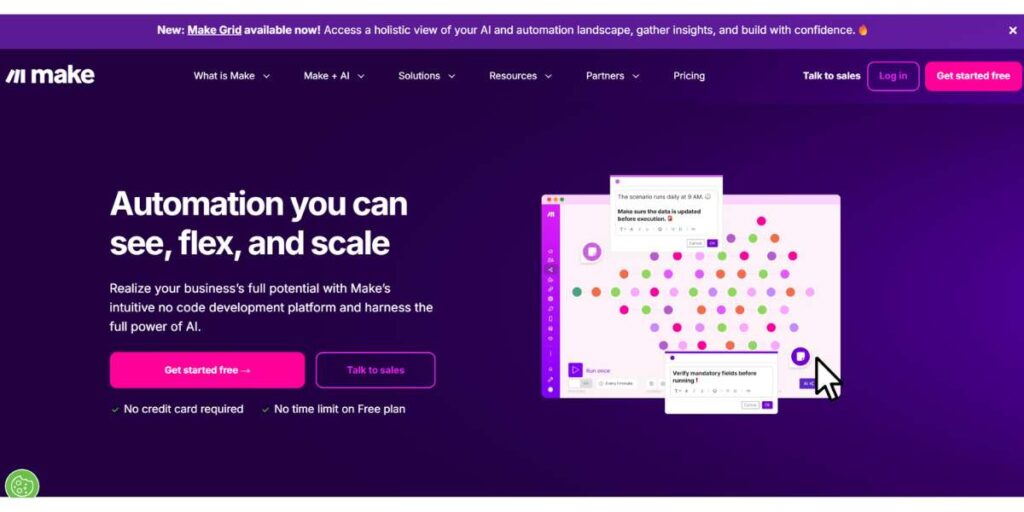
Why it’s powerful: Make offers a visual workflow automation that has a variety of abilities to manipulate data and competitive pricing.
Make is special in its graphical rendering of automation design so that a user can easily drag and drop to create a complex workflow. As one of the more advanced office automation tools, it excels in data transformation and manipulation, making it ideal for businesses that require high-level integration between applications. Its pricing approach can be competitive since it charges per operation and not monthly like others, allowing it to handle high volumes of automation needs cost-effectively. The state-of-the-art mechanisms, such as error correction, data filtering, and branching logics, bring enterprise-level functionality at affordable rates for growing businesses.
Key Features:
- Drag and drop visual workflow designer
- Upgraded data change instruments
- Error handling and real-time monitoring
- Permission and filtering
- REST / HTTPAPI modules
- Shared libraries community sharing
Best For: Companies that need complicated data management and graphical flow ddiagrammingPricing:
- Free plan available
- Core: $9/month
- Pro: $16/month
- Teams: $29/month
- Enterprise: Custom pricing
9. Toggl Track
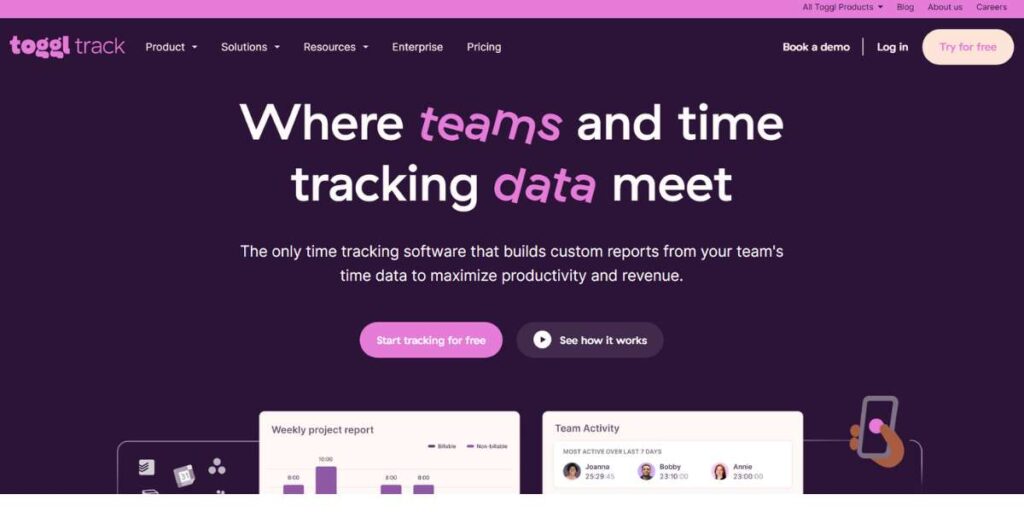
Why it’s powerful: Toggl Track is an automated time tracking and project management solution, featuring in-depth reporting and productivity measures of the team.
Toggl Track changes everything in time management because it makes tracking, reporting, and examining projects automatic. The time-intelligent features using the platform eliminate manual data and give precise time correlations in projects. Its reporting functions and capabilities provide opportunities for team productivity, project profitability, and resource allocation. Its integration with the project management tools makes its workflow flawless as far as time tracking is concerned, since it takes an inseparable part in the project completion as opposed to another administrative burden; therefore, it fits service-oriented businesses and freelancers.
Key Features:
- Automatic time clocking and sensing
- Client and project management
- Implicit data and reporting Analytics
- Information on team productivity
- Project management tools integration
- At mobile and desktop Apps
Best For: Businesses that offer a service, freelancers, and groups that require accurate time tracking
Pricing:
- Free plan available
- Starter: $9/month per user
- Premium: $18/month per user
- Enterprise: Custom pricing
10. Google Workspace Add-ons
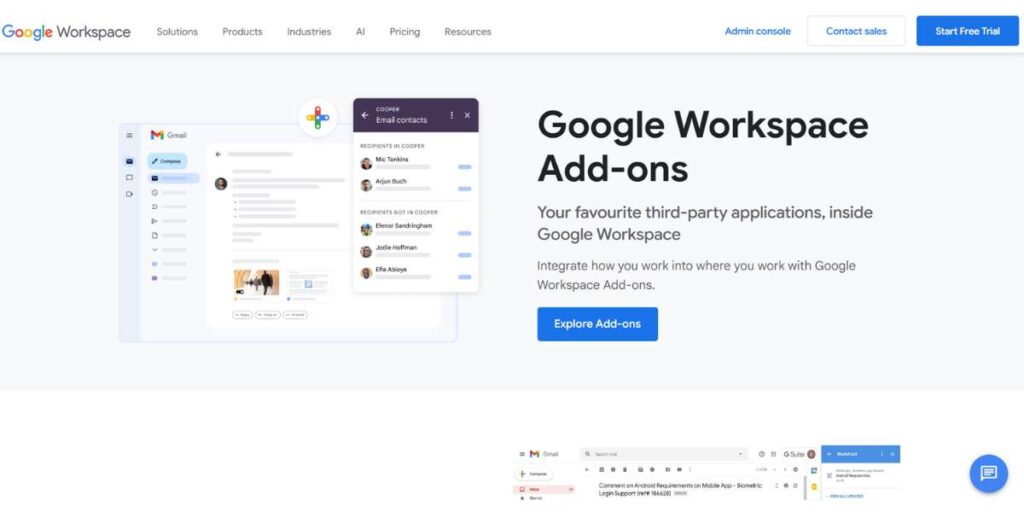
Why it’s powerful: Google Workspace Add-ons add specific automation capabilities to the already well-known Google apps.
Google Workspace Add-Ons take advantage of the pervasiveness of the Google productivity suite to allow smooth automation support. Here, the tools enhance Gmail, Google Sheets, Google Drive, and other Google tools with certain business-specific functionality. The ecosystem approach offers a strong automation platform and the same feeling of user experience. Whether it is CRM integration or sophisticated data analysis, the add-ons turn unsophisticated Google tools into complete business solutions without additional interface learning, thus making them a perfect fit for organizations already in the Google ecosystem.
Key Features:
- Great Google integration wide marketplace of dedicated tools
- Coherent experience on applications
- Enhancement of real-time collaboration
- Reporting and advanced data analysis
- Portability and mobile cross-body syncing
Best For: Businesses that already have Google Workspace, but want more functionality
Pricing:
- Many free options are available
- Paid add-ons: $5-50/month per user
- Custom enterprise solutions are available
How to Choose the Right Automation Tool
- Analyze Your Current Process: The first step is to draw the business processes to discover the repetitive cycles as well as the bottlenecks. Keep a documentation of the time spent conducting routine activities and identify where automation would have the greatest effect on productivity and efficiency.
- Define Integration Requirements: Analyse your existing software set up and identify what applications should interconnect with one another. Select office automation tools that provide a high degree of integration with the platforms you already have and your technology investments into the future.
- Think about Scalability Requirements: Select office automation service that may grow with your business. Some of the features to consider include such aspects as user capacities, the complexity of automation, and price points, so that you can be sure that the selected product can support any future scale without prompting a total system overhaul.
- Test ‘User Experience’: It is more important to focus on the Office automation services that help in the office with a user-friendly interface that best suit the level of tech. Be aware of training needs, adoption rate, and post-implementation support to enable your selection of training requirements, user adoption rates, and ongoing support needs to be made to help in successful implementation.
- Budget and ROI Analysis: Estimate the cost of the owner with subscription fees, implementation costs, and trainingcostst. Then compare it with possible savings due to fewer man-hours and higher efficiency to find the rate of return.
- Security and Compliance: Confirm that your selected office automation tools comply with the industry security measures and with compliance rules. Check policies of data handling, protection by encryption, and access control to ensure the security of important business information.
Pro Tips for Getting Started with Automation
- Start Small and Scale: It is better to start with smaller means of high outcomes, like responding to emails or transferring data. Learn how to use simpler workflows and processes before doing complicated processes. It is a strategy that gains confidence and value rapidly for the stakeholders.
- Dependencies First: Reference sources, systems, and stakeholders of your target processes. This knowledge of relationships averts scenarios of failure of automation and ensures an easy implementation. Prepare flow charts to enable an understanding of dependencies and decision-making points.
- Test Severely: Use a thorough testing process with every automated workflow before total implementation. Keep using test data and design backup processes, and build monitoring processes to detect errors in time. Reliability is guaranteed by conducting regular tests, and this avoids expensive errors.
- Keep Everything in Writing: Ensure that well-documented cases related to the automated procedures, the setup instructions, the troubleshooting documentations, and even the change history are maintained. The documentation will allow team members to maintain, know, and change automations as business requirements change.
- Monitor and Optimize: Put up routine checks in order to evaluate the automation execution and prospects of working on improvements. Trace your efficiency increases with the help of analytics and reporting functions to adapt your work processes to the real usage patterns and outcomes.
- Empower Your Team: Put into practice effective training programs for your team members in the use and maintenance of office automation tools. Make support permanent and build internal champions who will help with troubleshooting and optimization.
Conclusion
Businesses today find it impossible to perform operations without their office automation tools in place to provide a competitive edge to companies in terms of operational efficiency. The list of ten tools specified in this guide is the list of the most optimal tools that have the most affordable solutions to the needs of various businesses within their budgets. Whether it is an automated task application or a sophisticated coordination of the working process, these office automation solutions are the basis of the digital transformation and sustainable development. The key to success is a careful selection, correct implementation, and constant optimization in order to make the maximum out of the investment.
FAQs
What are the main benefits of office automation tools?
The office automation system minimizes manual work, minimizes the number of errors, enhances the output, gives employees a chance to work on strategic activities, and provides better efficiency to the overall business.
How much do office automation tools typically cost?
Prices range from extremely low, free of charge, to hundreds of dollars a month. The initial free or low-cost options are available to most small businesses starting at less than $50 a month.
Are office automation service difficult to implement?
The modern office automation solutions are easily configured as they have an intuitive interface, are well-documented, and support services to assist in the configuration of an application.
Can office automation tools integrate with existing software?
Yes, the majority of office automation services have comprehensive integration with the APIs, native connectors, and third-party platforms to interface with existing business applications.
What security measures do office automation services provide?
The top office automation services have the highest level of security that includes aspects of encryption, access controls, certification, and periodic security testing to protect corporate information.
 Get 50% off on Vault theme. Limited time offer!
Get 50% off on Vault theme. Limited time offer!